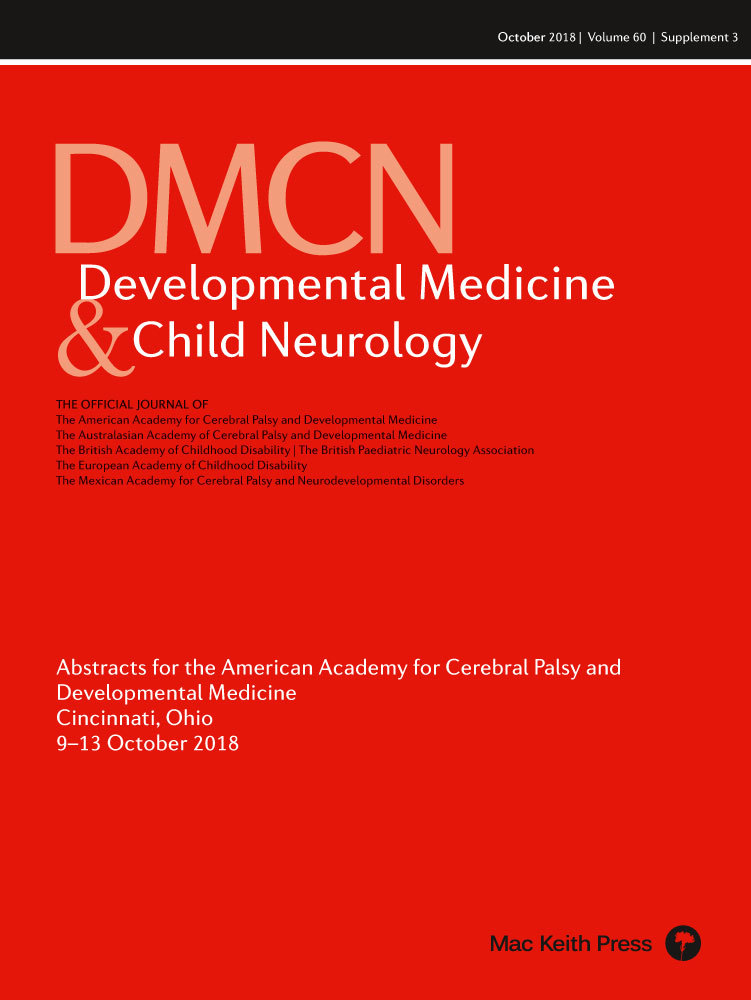Self-reported pain levels are related with the aberrant somatosensory activity in children with cerebral palsy
SP35
J Gehringer1, D Arpin1, T Wilson1, M Kurz2
1University of Nebraska Medical Center, Omaha, NE, USA; 2Munroe-Meyer Institute, UNMC, Department of Physical Therapy, Omaha, NE, USA
Background and Objective(s): Although there are numerous reports that many children with cerebral palsy (CP) have moderate-to-severe persistent pain, the neurophysiological origin of the pain is not clear. Potentially the early brain injuries seen in these children may result in maladaptive neuroplastic changes that disrupt the normal cortical processing of pain sensations. This premise is partially supported by substantial magnetoencephalography (MEG) brain imaging data, which has shown aberrant somatosensory cortical activity in children with CP when the peripheral receptors serving the feet and hands are stimulated. The objective of the current study was to test the hypothesis that there is a connection between the reported pain levels in children with CP and the somatosensory cortical processing.
Study Design: Cohort.
Study Participants & Setting: Thirteen children with CP (age=15.5±3.7 yrs., GMFCS=I-IV, 6 female) were recruited to participate in a brain imaging protocol that was conducted at an academic medical center.
Materials/Methods: MEG brain imaging was used to assess the somatosensory cortical activity elicited by a single-pulse electrical stimulation paradigm that was applied to the tibial nerve as the children sat quietly. This paradigm stimulated both the mechano- and nociceptors of the foot. Advanced beamforming methods were employed to image the oscillatory source power changes across the entire brain volume. The pseudo-t value of the peak voxel (cube of tissue) in the somatosensory cortices was extracted to quantify the magnitude of the cortical activity. The children additionally completed the Quality of Life in Neurological Disorders (Neuro-QOL) Pediatric Pain Scale. Higher scores on the Neuro-QOL indicate a greater number of unpleasant painful experiences within the past 7 days. A Spearman rho correlation was used to evaluate the possible connection between the strength of the somatosensory cortical activity and the reported pain levels.
Results: The beamforming analysis indicated that were significant (p=0.007) alpha/beta (8–18 Hz) and gamma (40–50 Hz) oscillations in the foot region of the somatosensory cortices during the 25–150 ms time window after the electrical stimulation. Notably, there was a strong negative rank order correlation between the strength of the alpha/beta oscillations in the somatosensory cortices and the Neuro-QOL score (rho=−0.72; p=0.001). This suggests that children with the weakest somatosensory cortical activity in the alpha/beta range also reported the greatest amount of pain.
Conclusions/Significance: Our results imply that there might be a fundamental link between the integrity of somatosensory cortical processing and the pain perceptions of children with CP. These results are significant because they highlight a possible neurologic origin that may be partly related to the heightened pain perceptions reported in children with CP.




